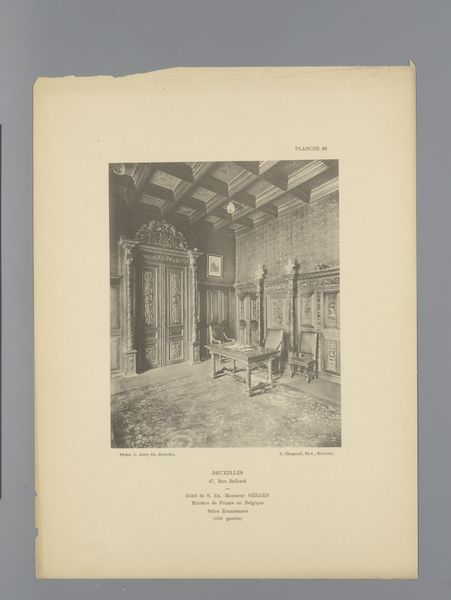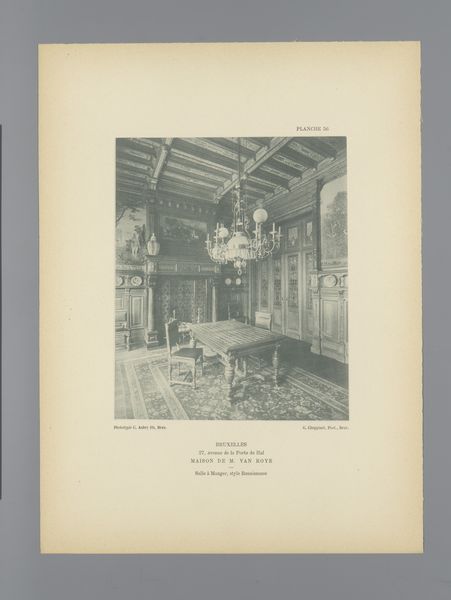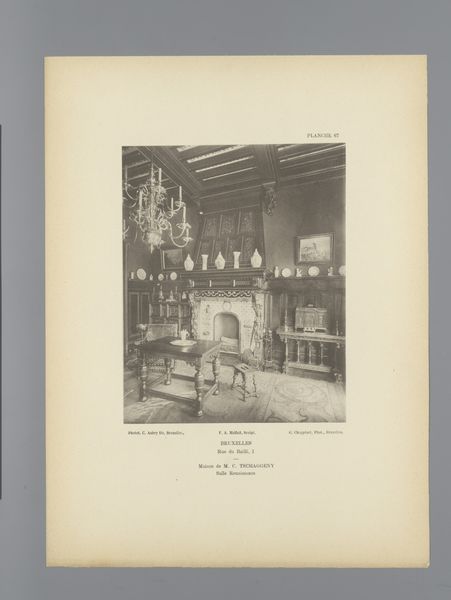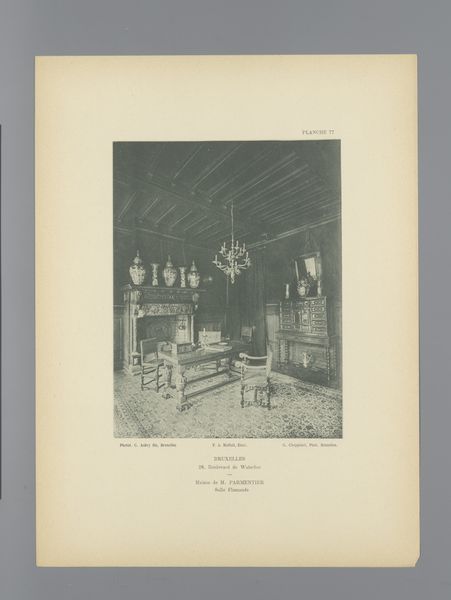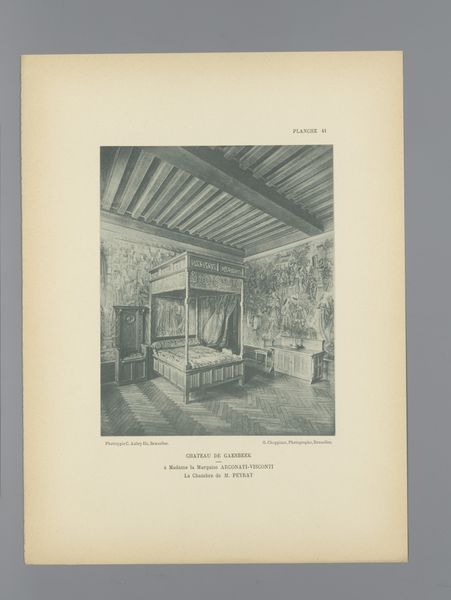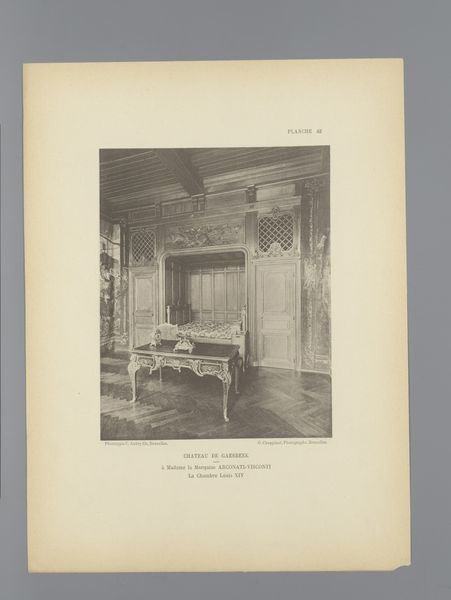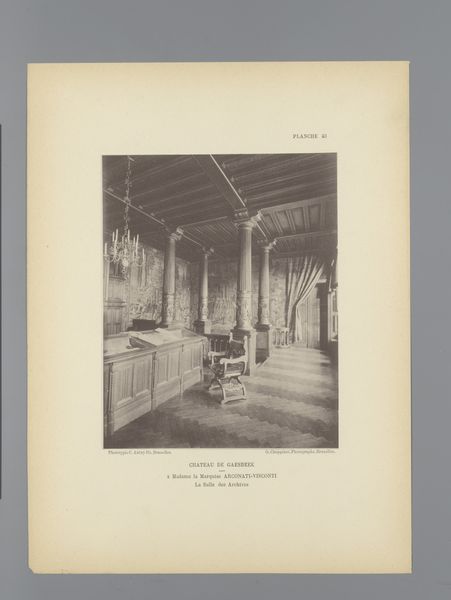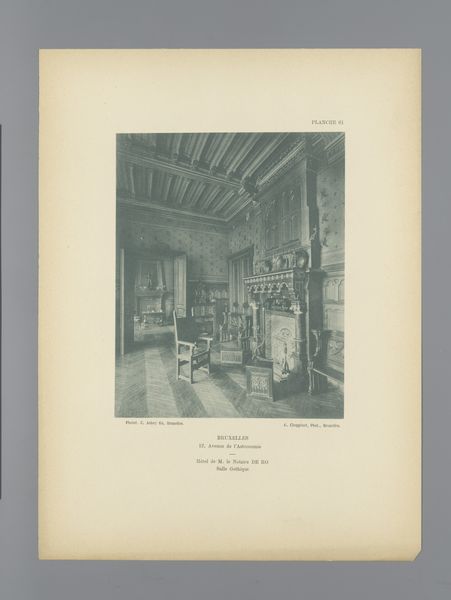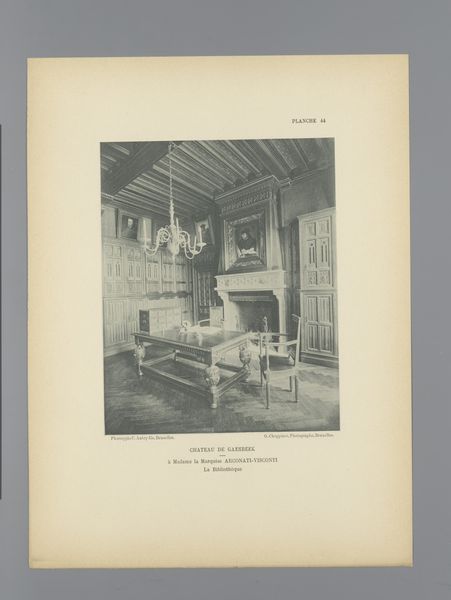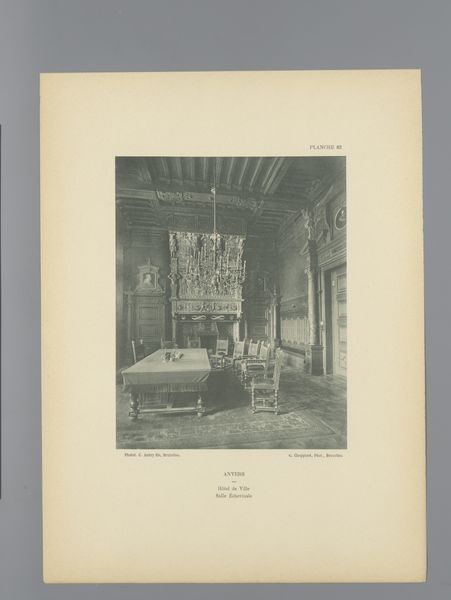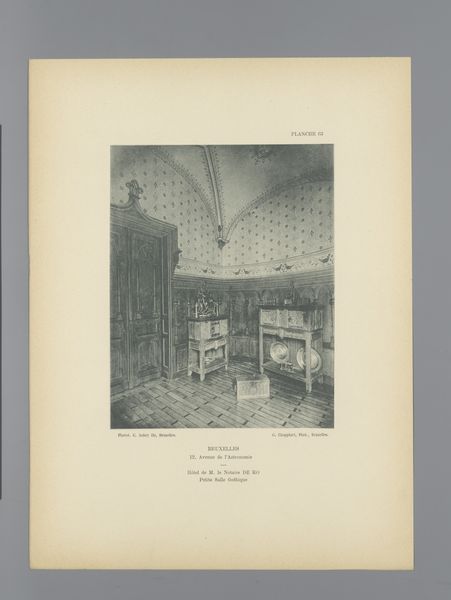
Dimensions: height 197 mm, width 156 mm
Copyright: Rijks Museum: Open Domain
Editor: This is "Gezicht op de eetzaal van het Kasteel van Gaasbeek, België," or "View of the Dining Room of Gaasbeek Castle, Belgium," by G. Choppinet. Created before 1898, it appears to be a gelatin-silver print. The chessboard floor really jumps out. What's your interpretation? Curator: Well, immediately I consider the function of such a carefully staged photograph. It depicts an aristocratic space intended for display, reflecting the values of the owner and the role the Chateau plays as a landmark in its community. Consider the photograph itself – its creation and distribution served to solidify the Chateau's status as a site of power. Editor: So, it's more about image-making than just capturing a dining room? Curator: Precisely! We can think of photography, particularly images like this, as actively shaping historical narratives. The fireplace, the portraits, the table settings—these aren’t just decorations. They communicate wealth, history, and lineage. Who would this print be made for and how would it have been circulated? These are key questions. Editor: It's interesting to think about how a photograph can be an active player in social dynamics. It's not just documenting history, it's creating it! Curator: Exactly. The politics of imagery are deeply embedded in how we understand history, architecture, and the role of institutions. And that ornate chandelier suggests that electricity might be a brand new addition here. Editor: Thanks for opening my eyes to the stories behind the image. Now I'm really thinking about its place and time. Curator: It's all about looking beyond the surface! Thinking about photography as a deliberate statement allows us to see these historical settings in a new, dynamic light.
Comments
No comments
Be the first to comment and join the conversation on the ultimate creative platform.
